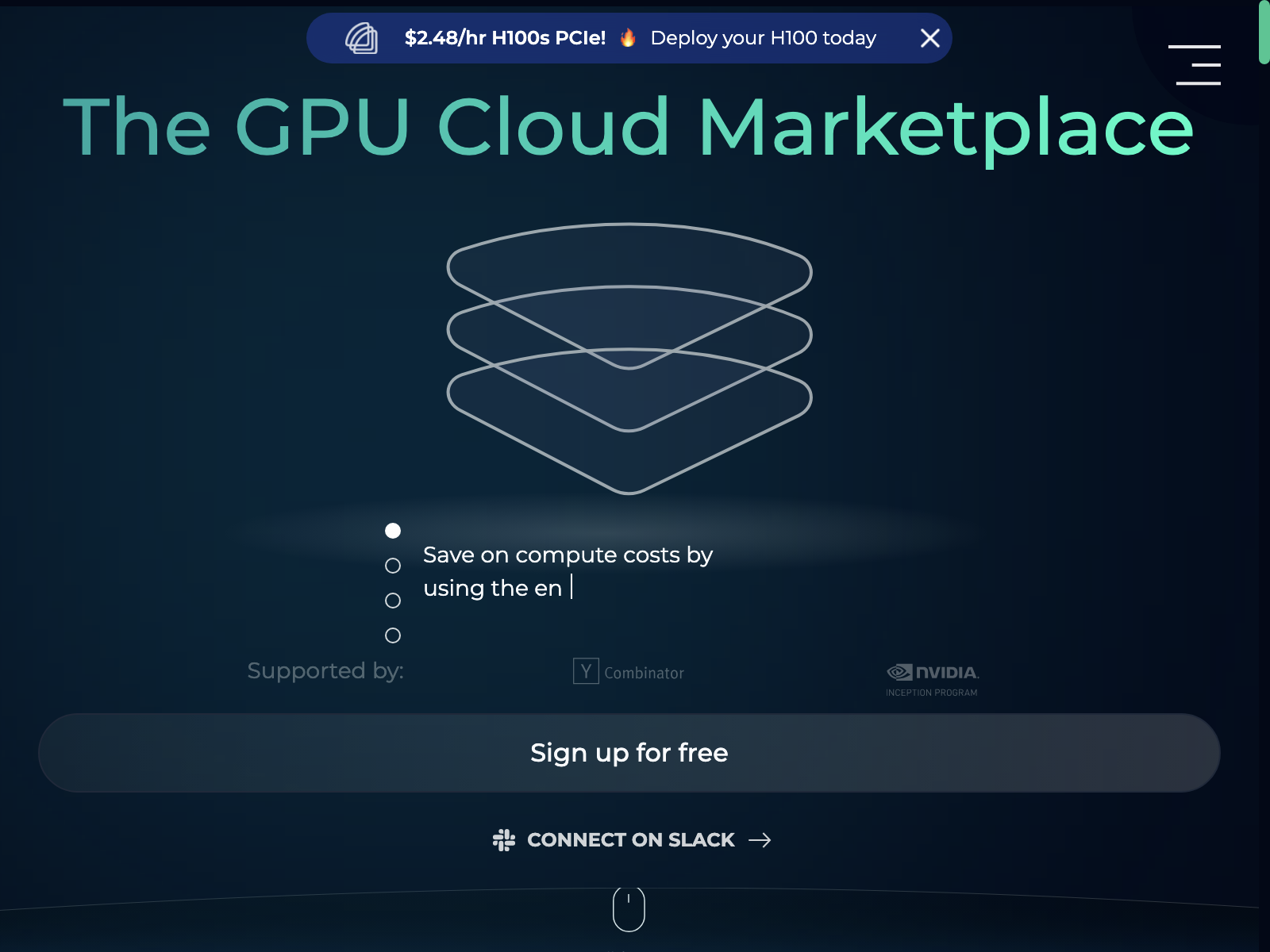Shadeform - The GPU Cloud Marketplace

Shadeform Overview
Shadeform is an innovative AI-powered platform that revolutionizes the way businesses manage their GPU-powered cloud infrastructure. With its cutting-edge technology, Shadeform provides a seamless and efficient solution for organizations to navigate the complex landscape of cloud computing.
In a detailed review, Shadeform stands out as a comprehensive tool that simplifies the process of cloud resource management. Its user-friendly interface and robust features empower users to easily compare prices, availability, and performance across various cloud providers, allowing them to make informed decisions and optimize their cloud deployments.
Shadeform Key Features
- Cross-Cloud Visibility: Shadeform aggregates pricing and availability data from multiple cloud providers, giving users a centralized view of the GPU cloud landscape.
- Intuitive Dashboard: The platform's intuitive dashboard provides a clear and concise overview of users' cloud resources, making it easy to monitor and manage their fleets.
- Automated Deployment: Shadeform's seamless integration with cloud providers allows users to launch and manage their GPU-powered workloads across different platforms with just a few clicks.
- Cost Optimization: The tool's advanced analytics and recommendations help users identify cost-saving opportunities and optimize their cloud spending.
- Scalability and Flexibility: Shadeform's scalable architecture ensures that users can easily accommodate their growing computing needs, while its flexibility allows for seamless integration with existing workflows.
Shadeform Use Cases
Shadeform's versatility makes it a valuable tool for a wide range of industries and use cases, including:
- Machine Learning and AI Development: Researchers and data scientists can leverage Shadeform to access GPU-powered cloud resources for their AI and machine learning projects.
- Media and Entertainment: Content creators and visual effects artists can utilize Shadeform to efficiently manage their GPU-intensive workloads, such as rendering and video processing.
- Financial Services: Financial institutions can use Shadeform to optimize their GPU-accelerated workloads for tasks like financial modeling, risk analysis, and algorithmic trading.
Shadeform Pros and Cons
Pros:
- Comprehensive cross-cloud visibility and comparison
- Streamlined cloud resource management and deployment
- Cost optimization and savings
- Scalable and flexible platform
Cons:
- Limited integration with certain cloud providers
- Steep learning curve for users unfamiliar with cloud infrastructure
Shadeform Pricing
Shadeform offers a flexible pricing model that caters to the diverse needs of its users. The pricing structure is as follows:
| Plan | Monthly Fee |
|---|---|
| Starter | $99 |
| Pro | $499 |
| Enterprise | Custom Pricing |
Each plan provides access to a range of features and services, with the Enterprise plan offering customized solutions and dedicated support for large-scale organizations.
Shadeform Alternatives
While Shadeform stands out as a comprehensive GPU cloud management platform, there are a few alternative solutions worth considering:
- Spot by Netapp: Spot by Netapp is another cloud resource management tool that focuses on cost optimization and spot instance utilization.
- Kubecost: Kubecost is a Kubernetes-focused cost management solution that provides detailed insights into cloud spending and resource utilization.
- Cloudability: Cloudability is a multi-cloud cost management and optimization platform that helps organizations better understand and control their cloud expenditures.
Shadeform FAQ
-
What is Shadeform? Shadeform is a GPU cloud marketplace that provides a single, simple API to see prices and availability for every cloud and launch and manage your cross-cloud fleet, all in one place.
-
What are the key features of Shadeform? Shadeform's key features include cross-cloud visibility, an intuitive dashboard, automated deployment, cost optimization, and scalability and flexibility.
-
Who can benefit from using Shadeform? Shadeform is beneficial for a wide range of industries, including machine learning and AI development, media and entertainment, and financial services.
-
How does Shadeform's pricing structure work? Shadeform offers three pricing plans: Starter ($99/month), Pro ($499/month), and Enterprise (custom pricing), each with varying levels of features and services.
To learn more about Shadeform and how it can revolutionize your cloud computing experience, visit their website at https://www.shadeform.ai/ (opens in a new tab).